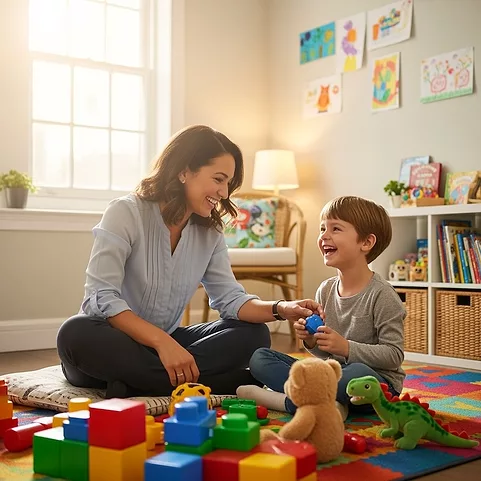What Meds Work for Insomnia in ADHD?
On the list of anxiety-provoking topics for parents, children’s sexual development and behavior is near the top for many. Parents may interpret normal sexual behavior in their children as a sign of abuse or other emotional problems, or they may under-react to sexualized behavior that indicates a major disturbance.
As clinicians, it’s crucial that wecan distinguish developmentally normal sexual behavior from that which suggests either serious mental illness or sexual abuse. Here, I will review normal and atypical sexual development in preschool and school age children, especially as this relates to the presence or emergence of childhood mental illness.
Normal Childhood Sexual Behavior
Normal sexual behavior varies in type and frequency depending on the age of the child. Young children commonly engage in sexual play both at home and, less frequently, in preschool or daycare. The frequency of sexual play for children under age 12 ranges from around 40%in studies polling daycare workers, up to greater than 90% in retrospective recall studies of young adults (Elkovitch N et al, Clin Psychol Rev 2009;29:586–598).
Sexual play for a typical child between two to five years old commonly includes touching adult female breasts, trying to look at other people when they are nude or undressing, an interest in the opposite gender, and touching her own genitals in the home.
Less common but not infrequent behaviors (in the 10%–20% range) for a two- to five-year-old child include touching his own genitals in public, showing his anogenital area to others, and hugging adults not well known to him (Sandnabba NK et al, Child Abuse Negl 2003;27:579–605).
As children get older, there is generally a decrease in self-stimulating, exhibitionism, and voyeuristic behaviors. (Notably, between six and 10 years old, children are also becoming more aware of what is socially appropriate, and this apparent decrease in observable sexual behaviors may be due in part to kids being more aware of when and where they engage in them.)
Children between six and 10 show an increase in asking questions about sex and using sexual language, an interestin talking about children of the opposite sex (including in a negative way), an interest in seeing nudity on TV, and tend to include genitals in drawings (Elkovitch N, op.cit).
In childhood, then, children engage in more sexual behavior at home thanin school; there is a greater variety ofand more commonly occurring sexual behavior in children under five yearsold compared with children older than five; and there are fewer voyeuristic and exhibitionistic behaviors and an increased interest in sex, nudity, and the opposite gender in school age kids compared with preschool age kids.
Potentially Problematic Sexual Behavior
With this knowledge of normal sexual behavior, how can we best identify abnormal or problematic behaviors?One category of atypical behaviors is dependent on age—what is appropriate in a four year old (eg, touching an adult’s
breasts) would be very concerning behavior in a 12 year old. The reverse is also true—you might expect a 12 year old to have some knowledge and language about sex, but a four year old with an awareness of details or specifics about adult sex should cause concern.
Another area of concern includes behaviors that occur at a low frequency, which for children under seven years old tend to be behaviors that are more intrusive and active, such as attempted intercourse, insertion of objects into the vagina or rectum, asking adults to touch them in a sexual way, or initiating oral- genital contact (Elkovitch N, op.cit).
A third category of concern includes behaviors that are age appropriate but occur excessively. In this case, otherwise age appropriate behaviors become atypical when the child is unable to engage in other behaviors. An example might be a child who masturbates on a daily basis for excessive periods of time, who becomes angry or distressed when unable to do so, or whose behavior is disruptive to others.
What Do These Behaviors Mean?
The most pressing concern for many parents is whether their child with concerning sexual behavior has been sexually abused. While sexual behavior problems are more common in children who have been sexually abused, notall children who have sexual behavior problems have a history of abuse, and not all children who are sexually abused will show aberrant sexual behavior.
While any concern for sexual abuse should be thoroughly investigated and incorporated into the diagnostic picture, sexual behavior problems also occur in a number of mental disorders in childhood and often occur in conjunction with other behavior problems.
Most youth with sexually inappropriate behavior also have difficulties with aggression toward other people and property, impulsivity, and
they often have poor relationships with friends and family (Adams J et al, Child Abuse Negl 1995;19(5):555-568). In one study of children with sexual behavior problems, 76% had conduct disorder, 40% had ADHD, and 27% had ODD (Grey a et al, Child Abuse Negl 1999;23(6):601– 621).
Inappropriate sexual behaviors are significantly related to insecure homes and where there is the presence of chronic illness, criminal activity, poor supervision, or access or exposure to pornography (Kellogg ND, Pediatrics 2009;124(3):992–998).
Carlat Verdict
Sexual behaviors are among some of the greatest concerns of parents. The overlap between inappropriate sexual behaviors and disruptive behavior disorders may be indicative of common environmental stressors such as insecure attachment, domestic violence, poor boundaries, and exposure to adult media. While much sexual behavior is normal, we should ask appropriate questions about the home and social environment to understand the context of the behavior.
Newsletters
Please see our Terms and Conditions, Privacy Policy, Subscription Agreement, Use of Cookies, and Hardware/Software Requirements to view our website.
© 2025 Carlat Publishing, LLC and Affiliates, All Rights Reserved.


_-The-Breakthrough-Antipsychotic-That-Could-Change-Everything.webp?t=1729528747)



